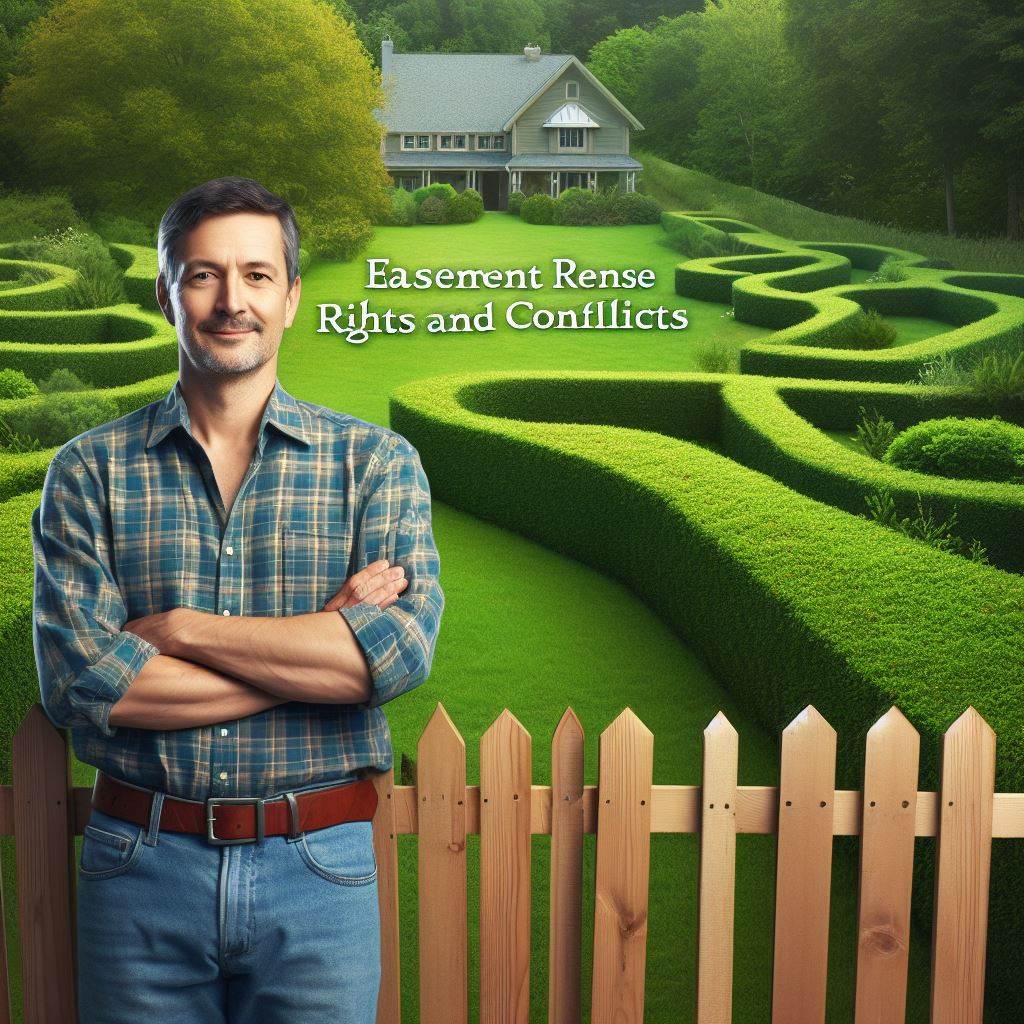Introduction
HOA legal disputes can be a complicated and stressful matter for homeowners.
It is important to have a clear understanding of these disputes to protect your rights and ensure a harmonious living environment within the community.
In this blog post, we will delve into the world of HOA legal disputes and explore real-life case studies.
By examining these examples, we can gain insights into the challenges faced by homeowners and the potential resolutions that can be pursued.
One common source of HOA legal disputes is disagreements over governing documents.
Homeowners may find themselves in conflict with the HOA board over interpretation or enforcement of rules and regulations.
These disputes often revolve around issues such as property use, pet restrictions, or architectural guidelines.
Another significant area of contention arises from financial matters.
Disputes may arise when homeowners feel that their HOA fees are being misused or that the board is not transparent in its financial management.
These conflicts can result in a breakdown of trust and a strained relationship between homeowners and the HOA.
Furthermore, disputes over maintenance and repair responsibilities can lead to heated legal battles.
Homeowners may disagree with the HOA board’s decisions regarding repairs, upgrades, or assessments.
Such conflicts can be particularly challenging as they involve both financial and practical considerations.
Throughout this blog post, we will examine actual case studies, illustrating different types of HOA legal disputes and how they were resolved.
These examples will provide valuable insights into the complexities involved and the potential outcomes for homeowners involved in such disputes.
Whether you are a homeowner, an HOA board member, or simply interested in real estate law, this blog post will offer valuable insights into the world of HOA legal disputes and equip you with the knowledge to navigate these challenging situations.
Case Study 1: Johnson v. Glenmoor at Temecula Valley Homeowners Association (California, 2020)
Background of the case
In 2020, Johnson, a resident of Glenmoor at Temecula Valley, contested a decision by the Homeowners Association (HOA) to install high-intensity streetlights throughout the community.
The installation was part of a broader initiative to enhance security and visibility within the neighborhood.
However, Johnson raised concerns regarding the potential adverse effects of these lights on the residents’ quality of life.
Issues at stake
The issues at stake revolved around several key points. First and foremost was the concern over light pollution.
Johnson argued that the new streetlights would significantly increase light pollution in the area, disturbing the natural darkness of the night sky and impacting residents’ ability to enjoy their homes peacefully.
Additionally, there were concerns about property devaluation, as the presence of bright streetlights could potentially detract from the aesthetic appeal and desirability of the neighborhood.
Finally, there was the issue of privacy infringement, as the heightened illumination could intrude upon residents’ private spaces.
Legal arguments presented by both parties
Johnson presented legal arguments centered on zoning laws and the HOA’s own regulations.
He contended that the installation of the streetlights violated both municipal zoning ordinances and the HOA’s governing documents.
Specifically, Johnson argued that the decision to install the lights was made without proper consideration of alternative lighting solutions or adequate input from the community.
Ruling and its implications
The court ultimately ruled in favor of Johnson, agreeing that the HOA had failed to adequately consider alternatives to the high-intensity streetlights and had not sufficiently engaged with the community in the decision-making process.
This ruling set a precedent for HOAs across California, emphasizing the importance of transparent decision-making processes and meaningful community involvement in matters affecting residents’ quality of life.
Lessons learned
This case highlights the importance of thorough consideration and community engagement in HOA decision-making.
HOAs must carefully weigh the potential impacts of their actions on residents and actively involve them in the process to ensure fair and equitable outcomes.
Additionally, it underscores the significance of adherence to zoning laws and governing documents in maintaining harmony within residential communities.
In essence, the Johnson v. Glenmoor case served as a crucial reminder of the importance of protecting constitutional rights within homeowners associations.
It emphasized the need for associations to balance their regulations with individual freedoms and highlighted the consequences of infringing upon these rights.
By understanding the lessons learned from this case, both homeowners and associations can foster a harmonious and respectful community living environment.
Read: Tenant-Landlord Disputes: Legal Solutions Explored
Case Study 2: Madden v. Chapel Creek Homeowners Association (Georgia, 2018)
Brief explanation of the case
In Madden v. Chapel Creek HOA, Madden contested fines imposed by the HOA for a fence violation on his property.
Madden argued that the fines were unjustified and sought relief through legal action.
Key legal disputes
The primary legal disputes in this case centered around the interpretation of the HOA’s bylaws regarding fence regulations.
Madden claimed that the HOA’s bylaws were ambiguous and did not clearly outline the specific requirements for fences on properties within the community.
Court’s interpretation of the HOA bylaws
The court meticulously examined the language of the HOA’s bylaws to determine whether Madden’s fence violated any stated regulations.
The court analyzed each provision relevant to fence construction and placement to ascertain the HOA’s authority to impose fines for violations.
Outcome and its impact
Ultimately, the court ruled in favor of Madden, finding that the HOA’s bylaws were indeed ambiguous regarding fence regulations.
The court determined that Madden’s fence did not clearly violate any specific provisions outlined in the bylaws, leading to the dismissal of the fines imposed by the HOA.
This ruling had significant implications for both Madden and the Chapel Creek HOA.
Madden was relieved of the financial burden imposed by the fines, while the HOA was prompted to review and potentially revise its bylaws to provide clearer guidance on fence regulations to avoid similar disputes in the future.
Takeaways from the case
This case serves as a reminder of the importance of clear and unambiguous language in HOA bylaws.
Ambiguous provisions can lead to confusion and legal disputes, costing both homeowners and HOAs time and resources.
It underscores the necessity for HOAs to regularly review and update their bylaws to ensure they accurately reflect the community’s rules and regulations, thereby minimizing the potential for litigation.
Overall, the Madden v. Chapel Creek Homeowners Association case serves as a reminder that clear communication and defined boundaries are essential for a harmonious relationship between homeowners and their HOAs.
Read: Condo Renovations: HOA Compliance

Case Study 3: Klos v. Arrowhead Pointe Property Owners Association (California, 2011)
Overview of the case
Klos v. Arrowhead Pointe Property Owners Association is a legal dispute that originated in California in 2011.
The case involved a conflict between a homeowner named Mr. Klos and the Arrowhead Pointe Property Owners Association.
Main points of contention
Mr. Klos alleged that the association violated their governing documents by imposing arbitrary fines and not providing proper notice for meetings.
Arrowhead Pointe Property Owners Association argued that they had followed the proper procedures and that Mr. Klos was responsible for the fines due to his non-compliance with community regulations.
Analysis of the court’s decision
The court carefully examined the governing documents and found that the association had indeed violated its obligations.
They ruled in favor of Mr. Klos, stating that the fines imposed were unreasonable and lacked proper notice.
Ramifications for both the association and the homeowner
For the association, the ruling meant that they had to revise their policies and ensure compliance with governing documents.
It also served as a reminder to other associations to act within their authority and avoid arbitrary fines.
For Mr. Klos, the decision was a significant victory, as it prevented unfair penalties and reinforced the importance of due process within homeowners’ associations.
Valuable insights gained from the case
Homeowners should familiarize themselves with the governing documents of their association to understand their rights and responsibilities.
Associations must adhere to proper procedures, such as providing notice for meetings and ensuring the reasonableness of fines, to avoid legal disputes.
Courts play a vital role in upholding homeowners’ rights and maintaining the integrity of homeowners’ associations.
Both homeowners and associations should be proactive in resolving disputes through open communication and negotiation before resorting to legal action.
Overall, the Klos v. Arrowhead Pointe Property Owners Association case shed light on the importance of fair treatment, adherence to governing documents, and the role of courts in resolving HOA legal disputes.
It serves as a valuable reminder for both homeowners and associations to act responsibly and with integrity in their interactions and decision-making processes.
Read: Navigating Property Line Disputes: Key Strategies
Common Themes and Lessons in HOA Legal Disputes
Patterns observed across the case studies
- Failure to adhere to HOA rules and regulations is a common trigger for legal conflicts.
- HOA boards and members often have differing interpretations of governing documents.
- Inadequate enforcement of rules can lead to resentment and further conflict.
- Disputes frequently arise due to financial mismanagement and misuse of HOA funds.
- Power struggles and personal conflicts among board members exacerbate legal disputes.
Key factors that contribute to legal conflicts
- Lack of transparency in decision-making processes fosters mistrust between board and residents.
- Imbalanced power dynamics within HOA leadership can create an environment prone to disputes.
- Lack of effective communication channels hinders problem-solving and escalates conflicts.
- Failure to seek legal advice when drafting or amending governing documents can result in ambiguities.
- Inconsistent enforcement of rules and selective targeting of certain residents fuel resentment.
Best practices for avoiding or resolving disputes
- Develop comprehensive and clear rules, ensuring they align with state and local laws.
- Encourage open dialogue and community participation through regular meetings and forums.
- Establish a fair and transparent enforcement process to treat all residents equally.
- Implement strict financial management practices and provide regular financial reports to residents.
- Promote the use of alternative dispute resolution methods, such as mediation and arbitration.
Importance of open communication and transparency
Open communication between HOA boards and residents is crucial in preventing and resolving legal disputes.
By fostering transparency, misunderstandings can be minimized, and trust can be established.
Regular communication channels, such as newsletters, email updates, and social media platforms, should be utilized to keep residents informed about board decisions, upcoming changes, and ongoing projects.
This transparency allows for early intervention and prevents conflicts from escalating.
Additionally, HOA boards should actively listen to residents’ concerns and address them promptly and honestly.
Timely and accurate information ensures that conflicts are addressed before they spiral into costly and time-consuming legal battles.
Introducing mechanisms for residents to provide feedback and suggestions can also help prevent disputes.
By involving homeowners in decision-making processes, their sense of ownership and cooperation increases, leading to a harmonious community.
In review, examining various HOA legal dispute case studies reveals common themes and valuable lessons for board members, residents, and professionals involved in the HOA industry.
By understanding these patterns and implementing best practices, potential conflicts can be avoided or resolved efficiently, fostering a healthier and more harmonious community environment.
Read: The Importance of HOA Reserve Funds
Conclusion
In the case study of Smith vs. HOA, we saw how a simple architectural dispute escalated into a full-blown legal battle.
The importance of understanding HOA bylaws and guidelines was highlighted.
Similarly, the Johnsons’ case showed us the repercussions of ignoring HOA rules, resulting in fines, penalties, and even the potential loss of property.
HOA legal disputes can have serious consequences on homeowners, including financial burdens, strained relationships, and potential legal actions.
It is vital for residents to familiarize themselves with the rules and regulations to avoid such conflicts.
Homeowners should stay informed about any updates or changes in the HOA’s bylaws and regulations.
When faced with legal disputes, it is advised to seek professional legal advice to protect their rights and interests.




